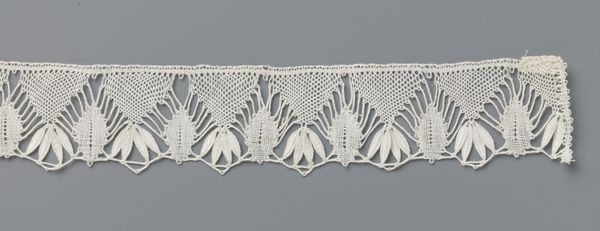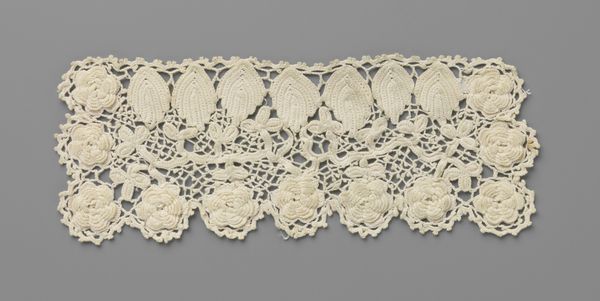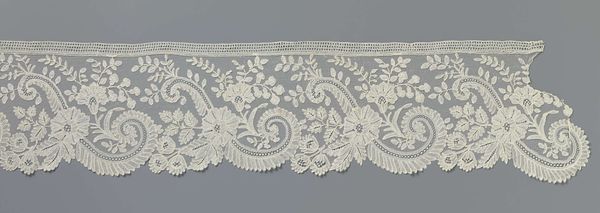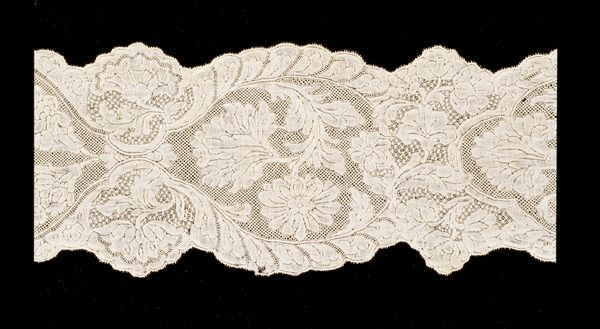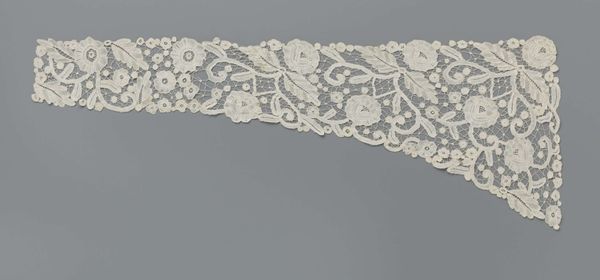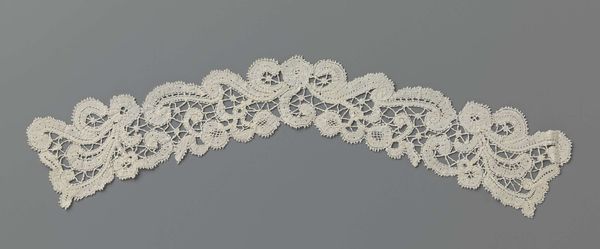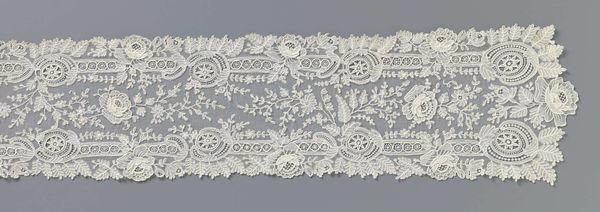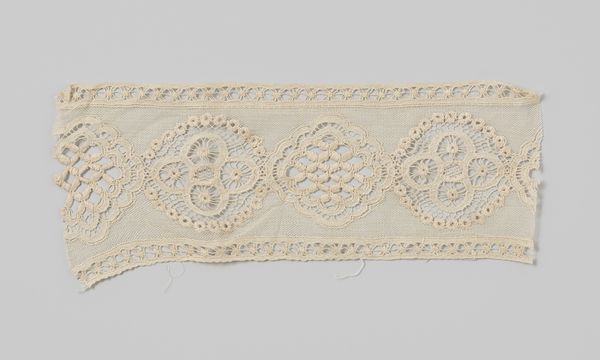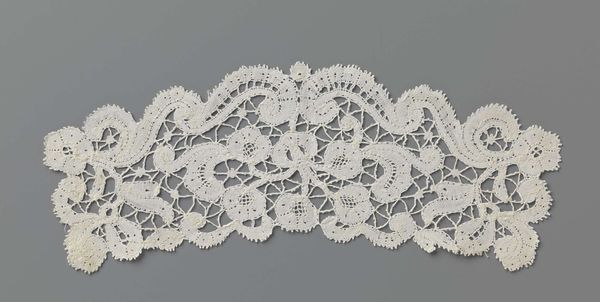
fibre-art, textile
#
natural stone pattern
#
fibre-art
#
arts-&-crafts-movement
#
textile
#
pattern design
#
repetitive shape and pattern
#
organic pattern
#
repetition of pattern
#
intricate pattern
#
regular pattern
#
pattern repetition
#
decorative-art
#
layered pattern
#
combined pattern
Dimensions: height 43 cm, width 9 cm
Copyright: Rijks Museum: Open Domain
Editor: Here we have "Kraag van kloskant met drielobbige waaierbloem," a bobbin lace collar with a three-lobed fan flower, from around 1915. The delicacy of the textile is just amazing! What intricate patterns. How would you interpret this artwork? Curator: Ah, lace. More than just decoration, you know? For me, looking at this collar, I feel transported back to a time of exquisite craftsmanship, when details mattered deeply. It reminds me of quiet parlors, tea parties, maybe even whispered secrets. Do you see the almost mathematical precision in the repeating floral motifs? It’s organic, yet meticulously planned. The Arts and Crafts movement really elevated these "humble" crafts. I almost see architecture, don't you think? Editor: Architecture! That's not what I expected. I see it a little. So, is the regularity of the patterns important? Curator: I think so. There's a calming rhythm to it, a sense of order in nature reflected through human hands. There's rebellion here, a reclaiming of traditional skills against industrialisation. I imagine this collar being a statement, a subtle push back against mass production. It embodies not just artistry, but an ethic. Editor: That's such a rich understanding. It seems so much more layered than just "pretty lace" now. Curator: Exactly! That’s what I adore about art. There are visible layers and a whole narrative waiting to be unravelled. It shows that true beauty often lies in the intent and meaning, not just the final image. Thanks for giving me a moment to think out loud! Editor: Thank you, I never considered textile art in that light before.
Comments
No comments
Be the first to comment and join the conversation on the ultimate creative platform.
